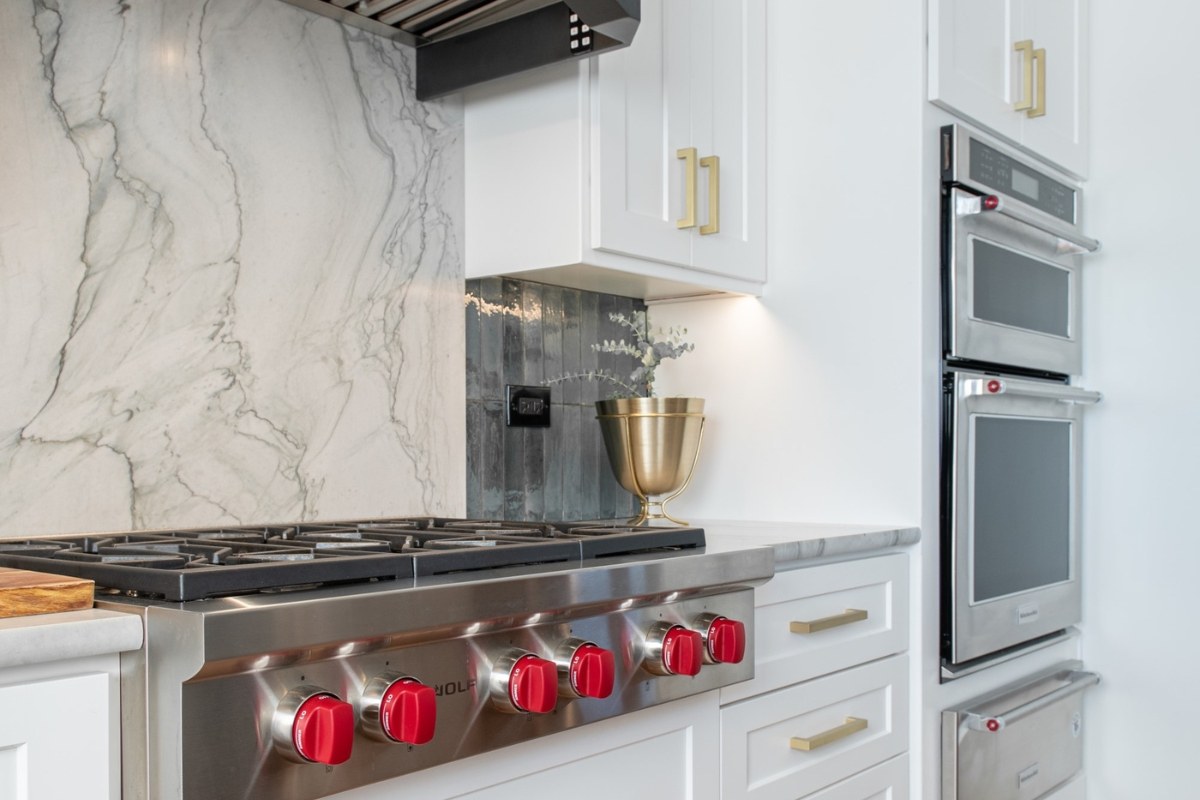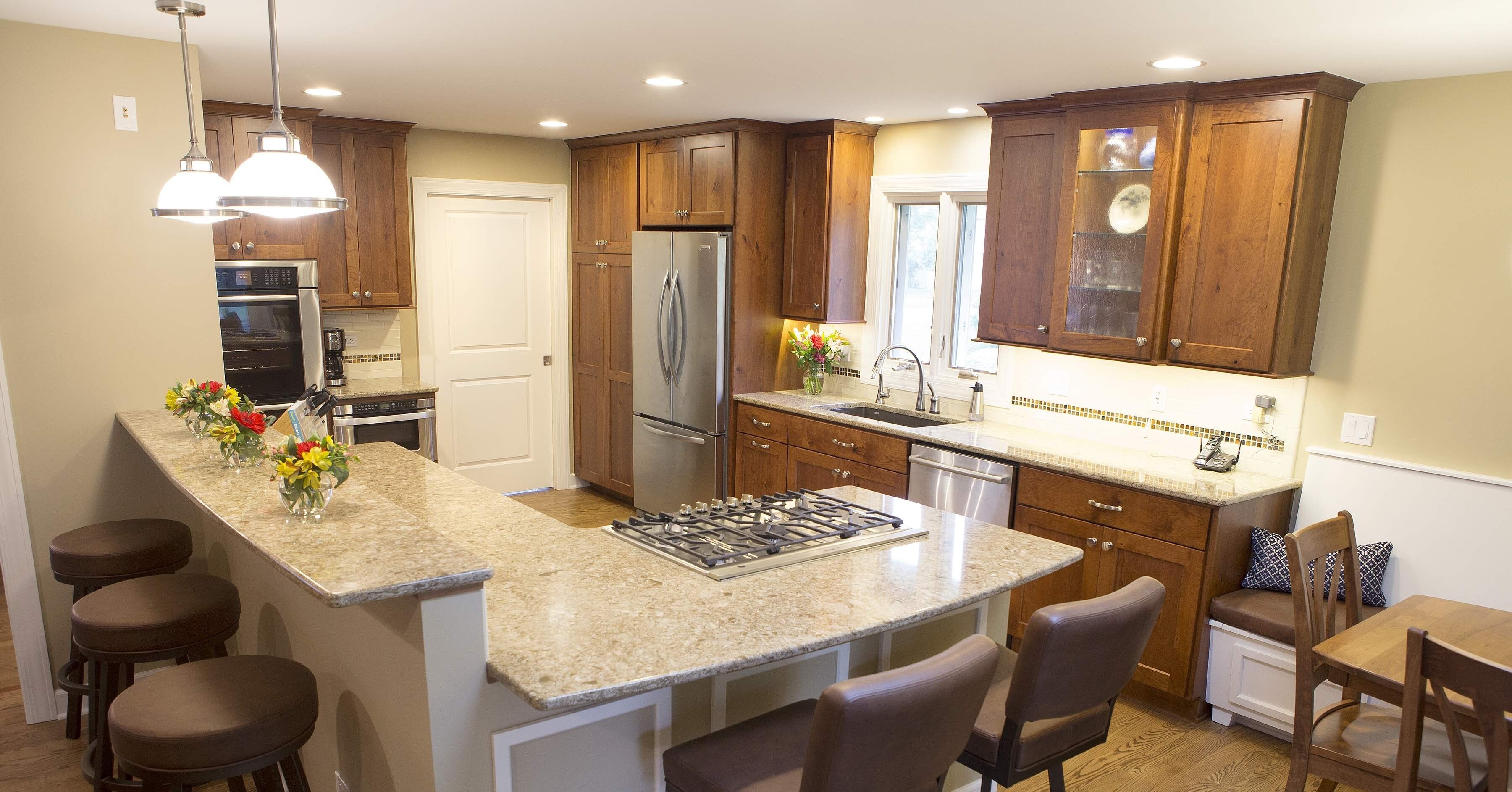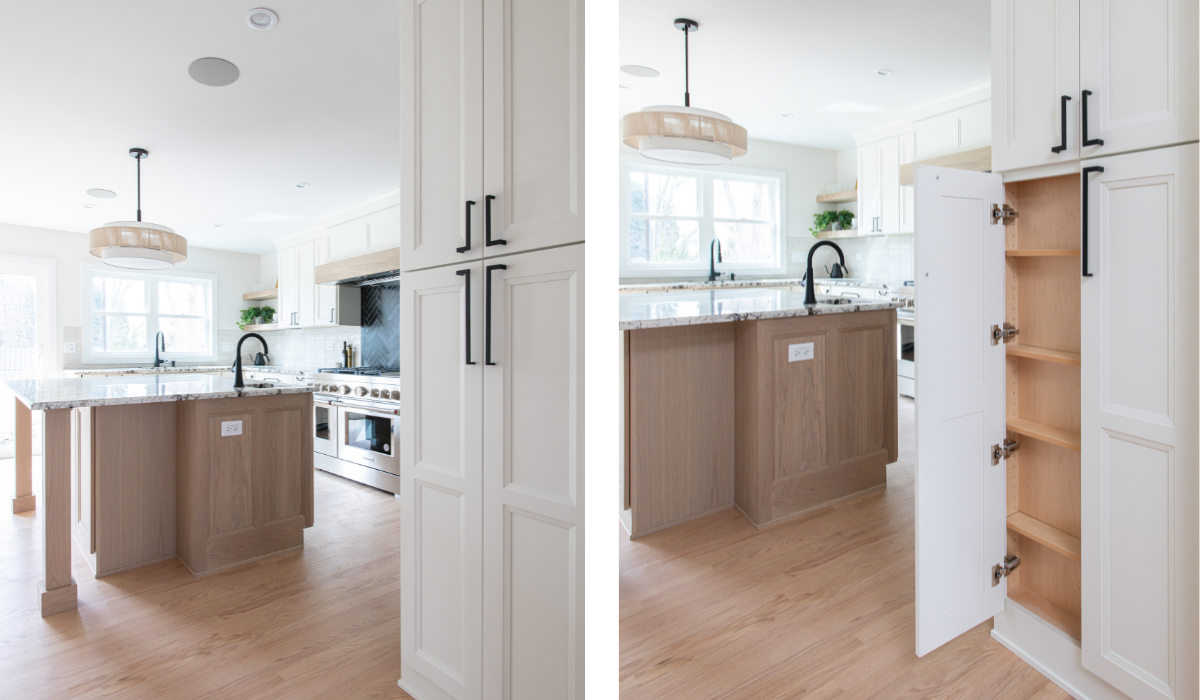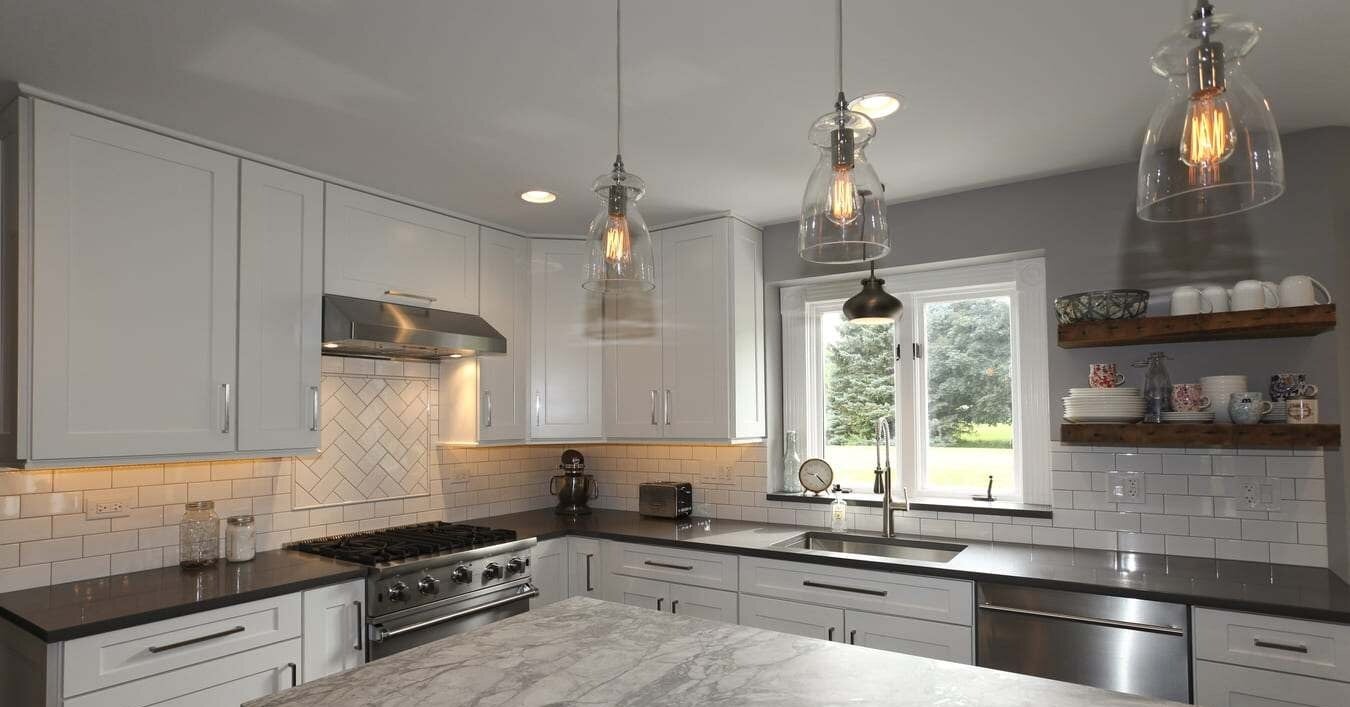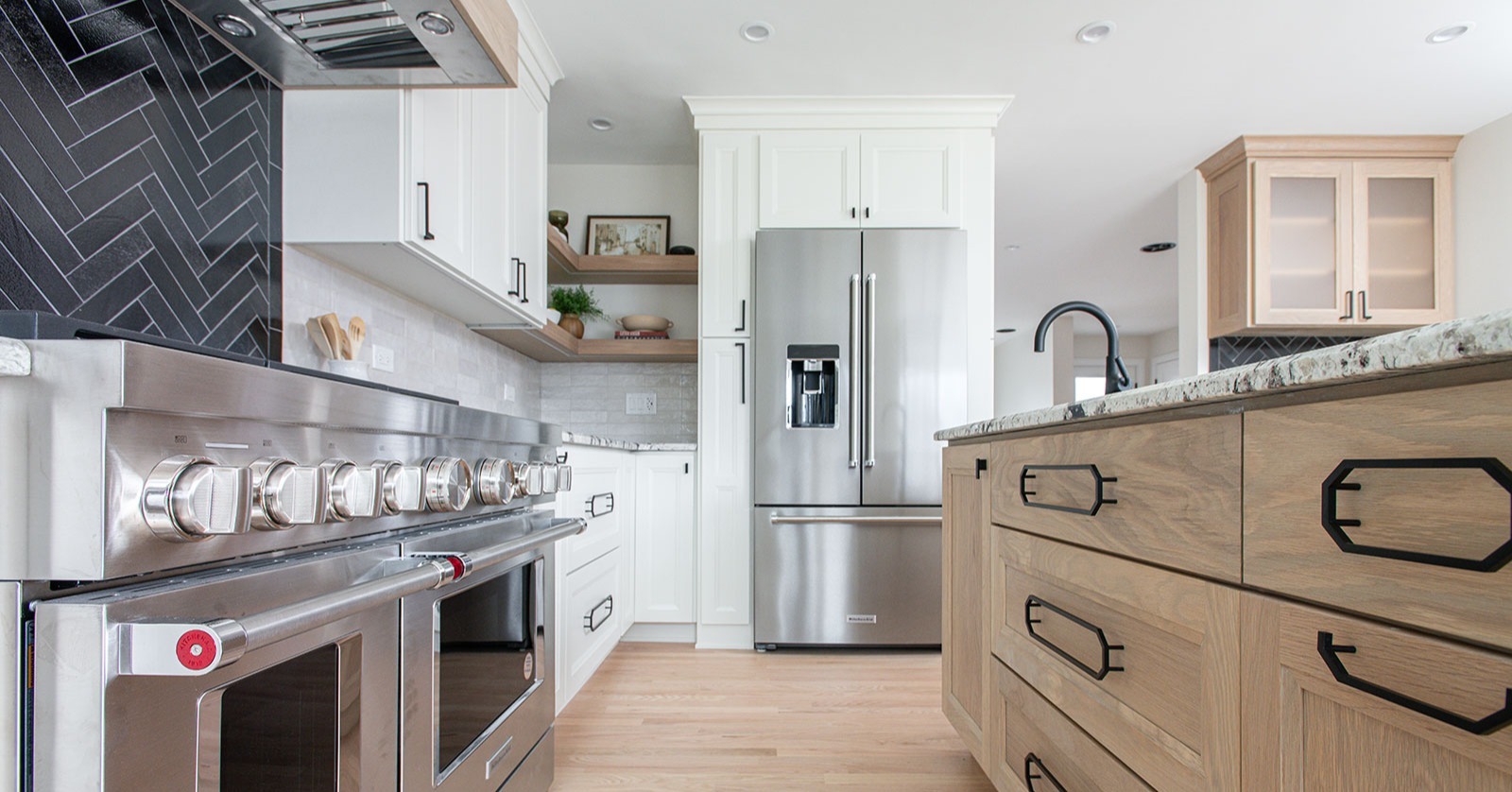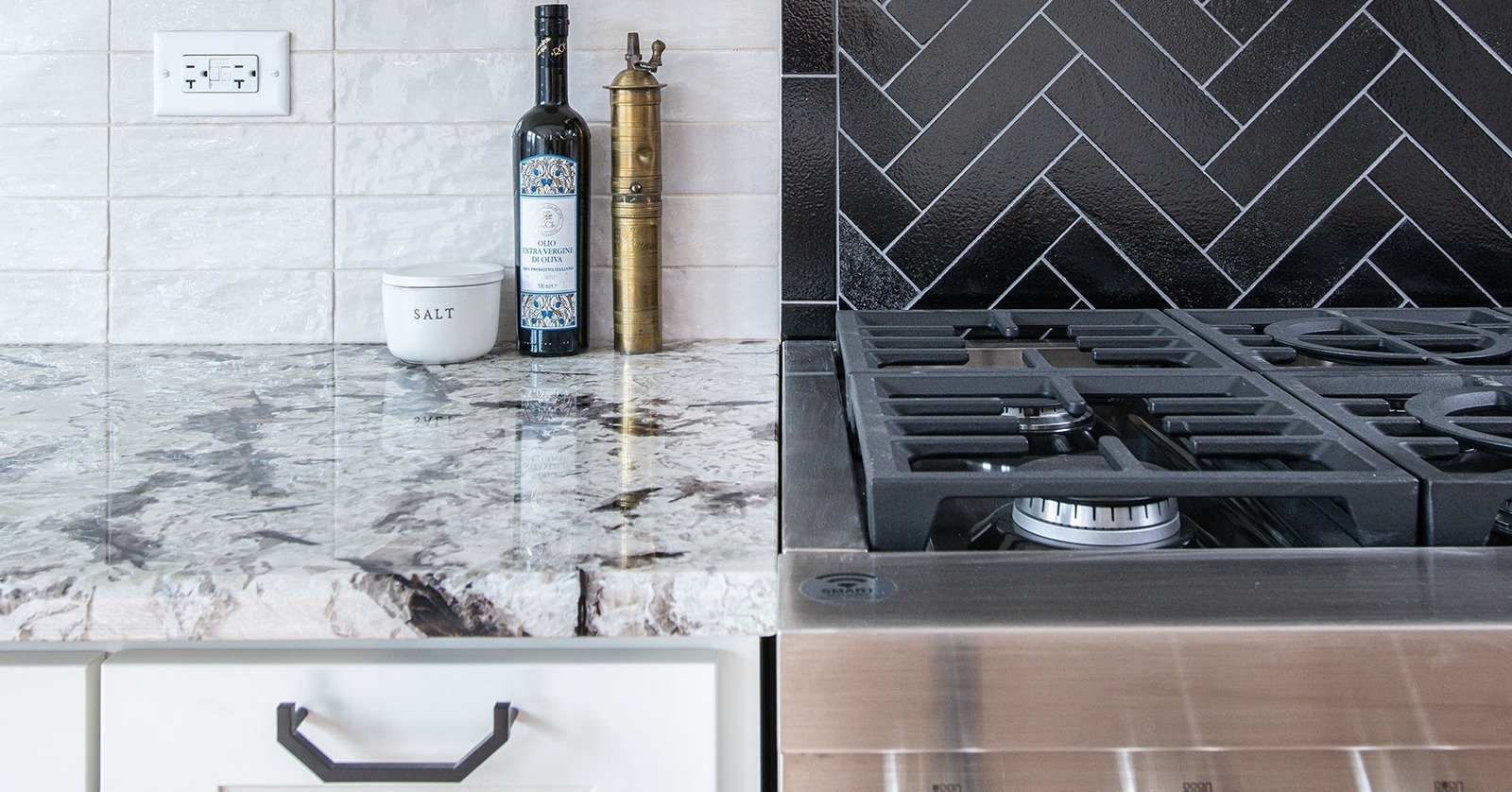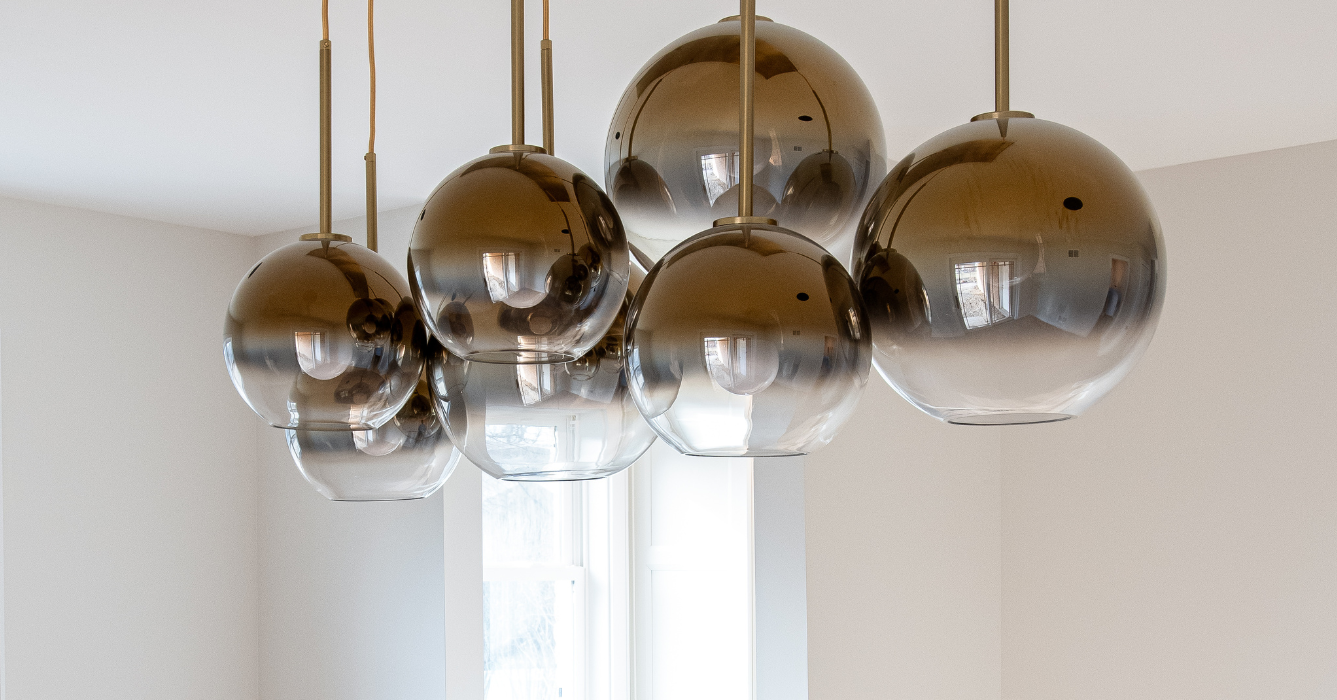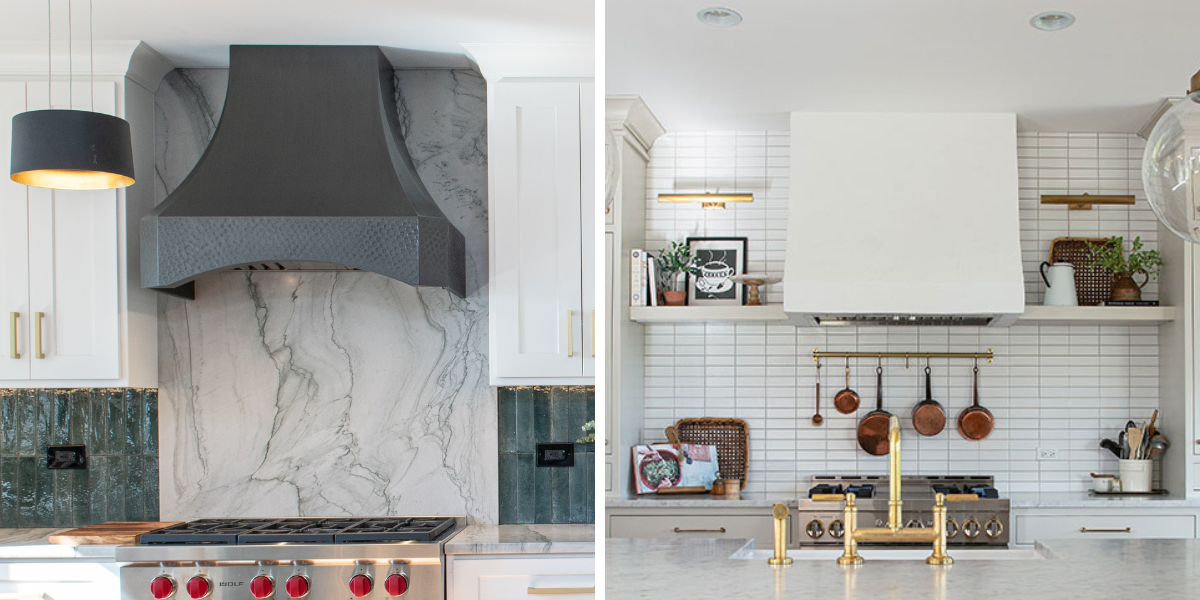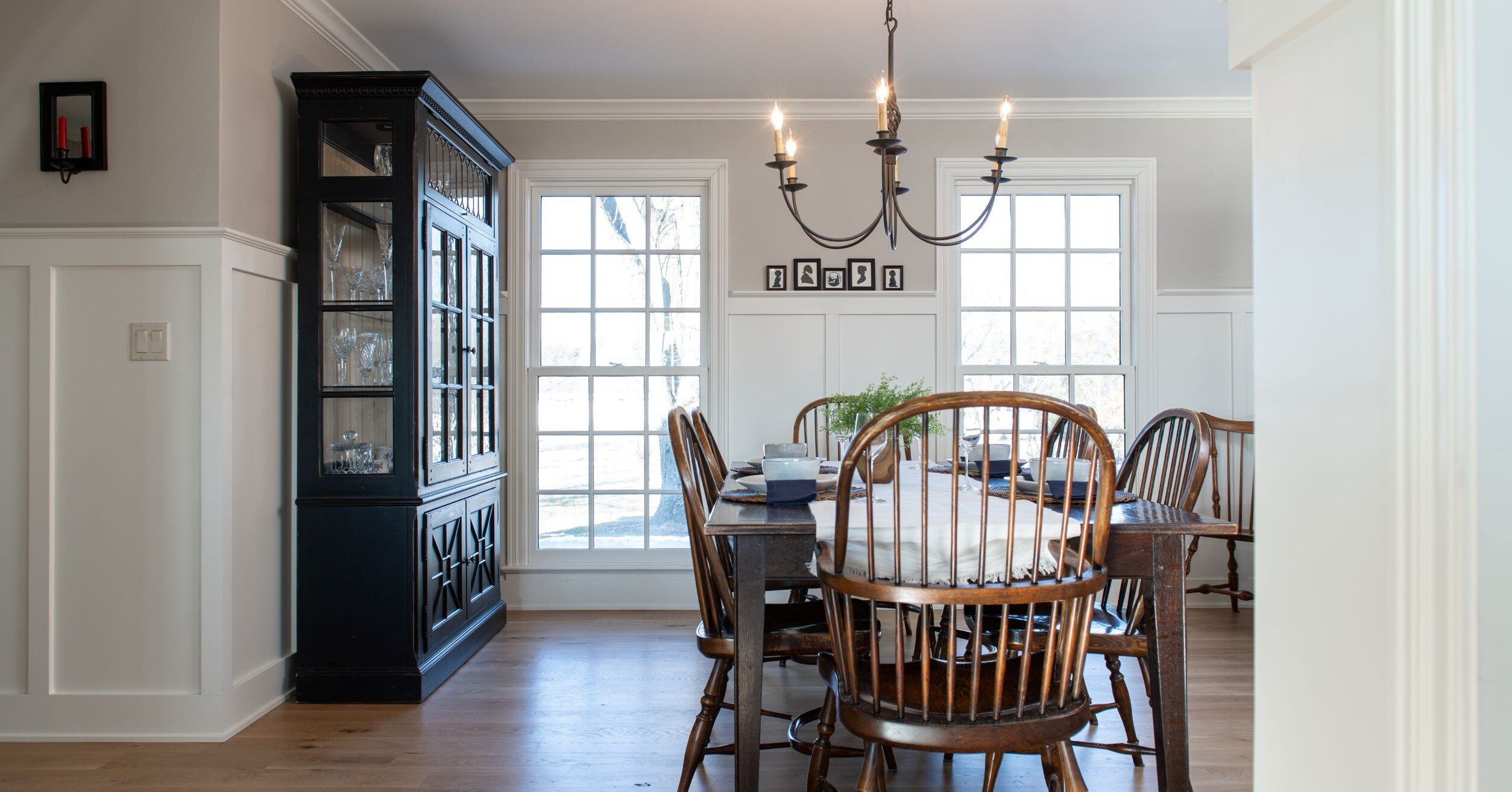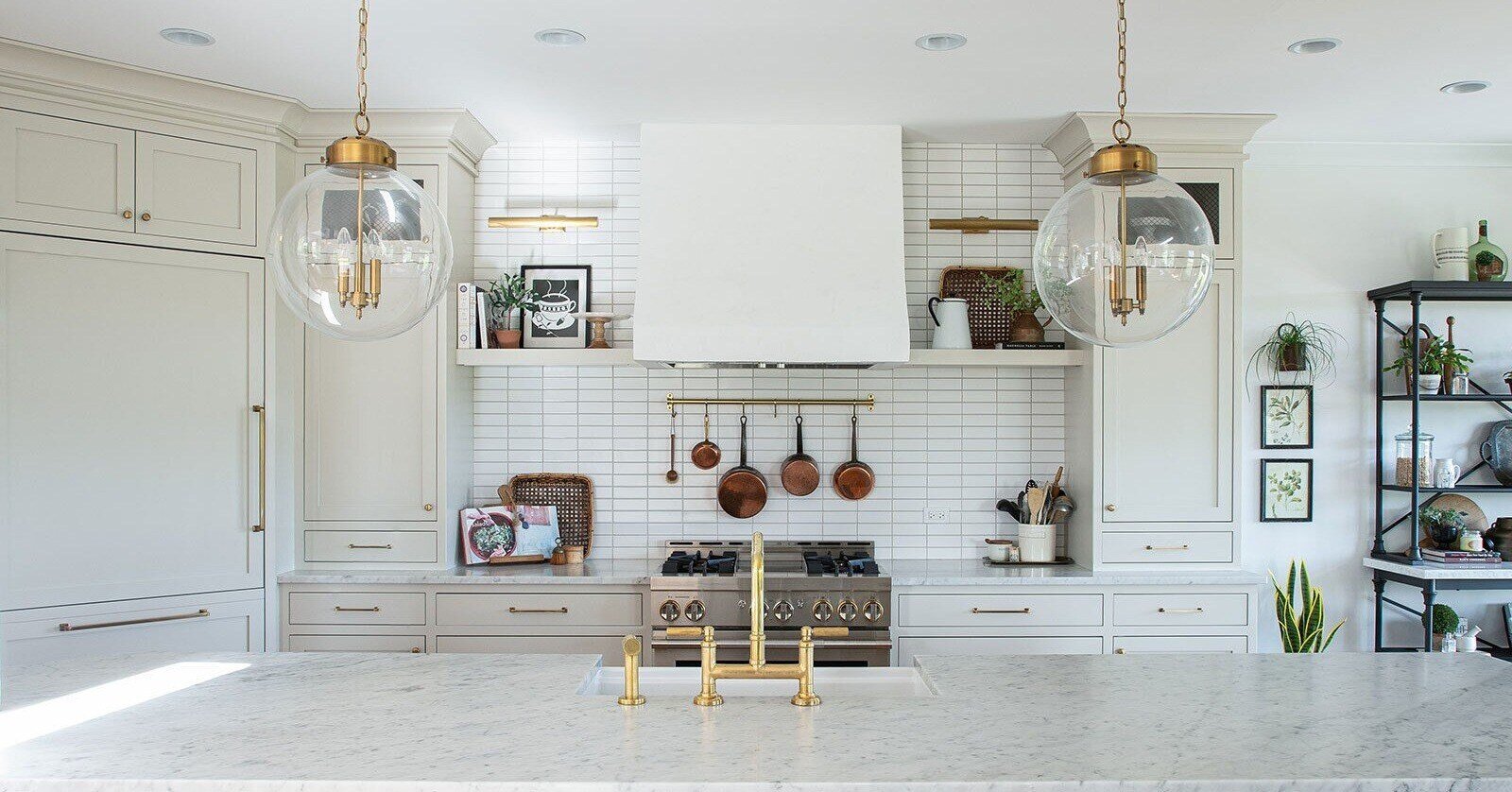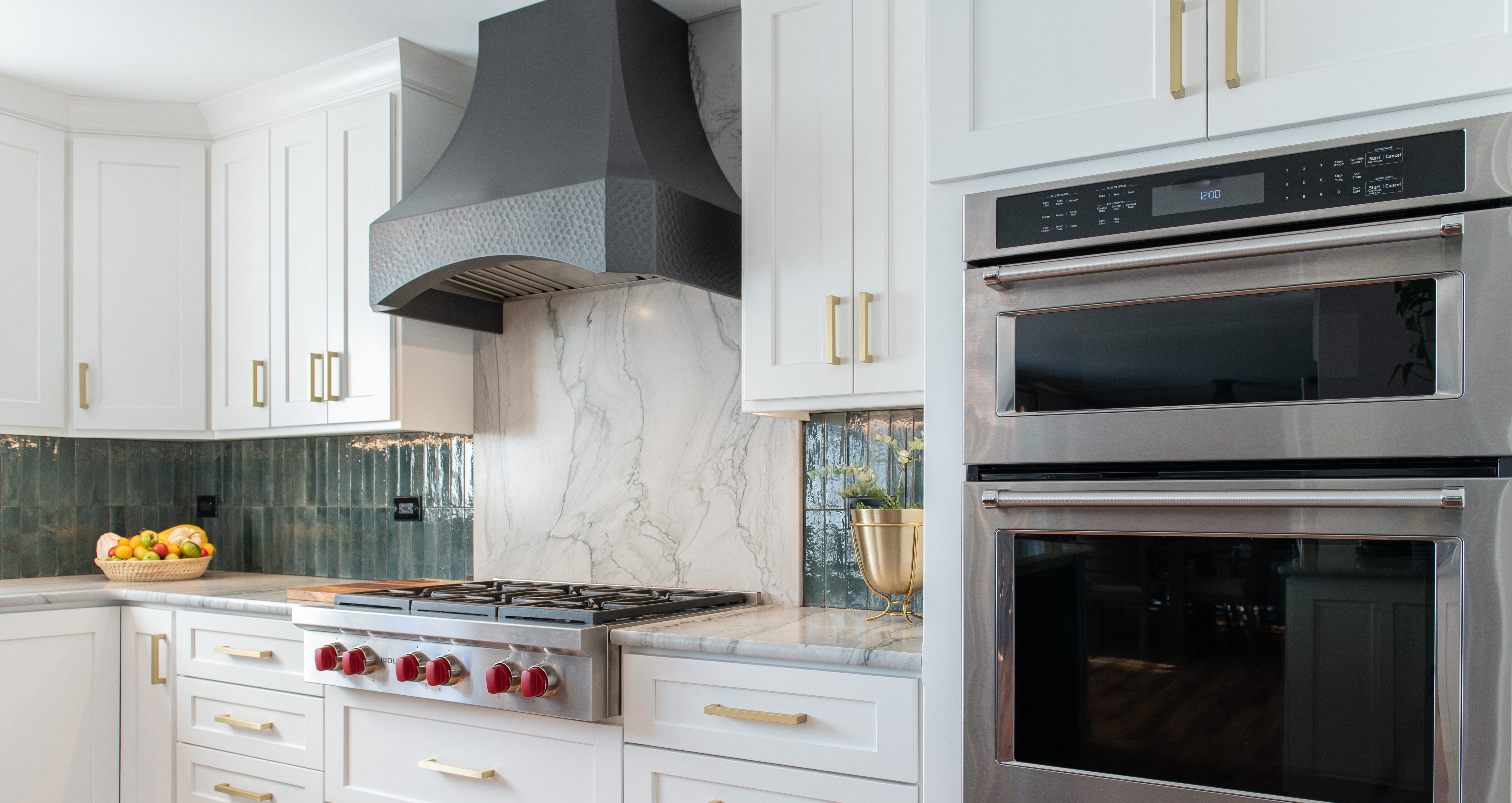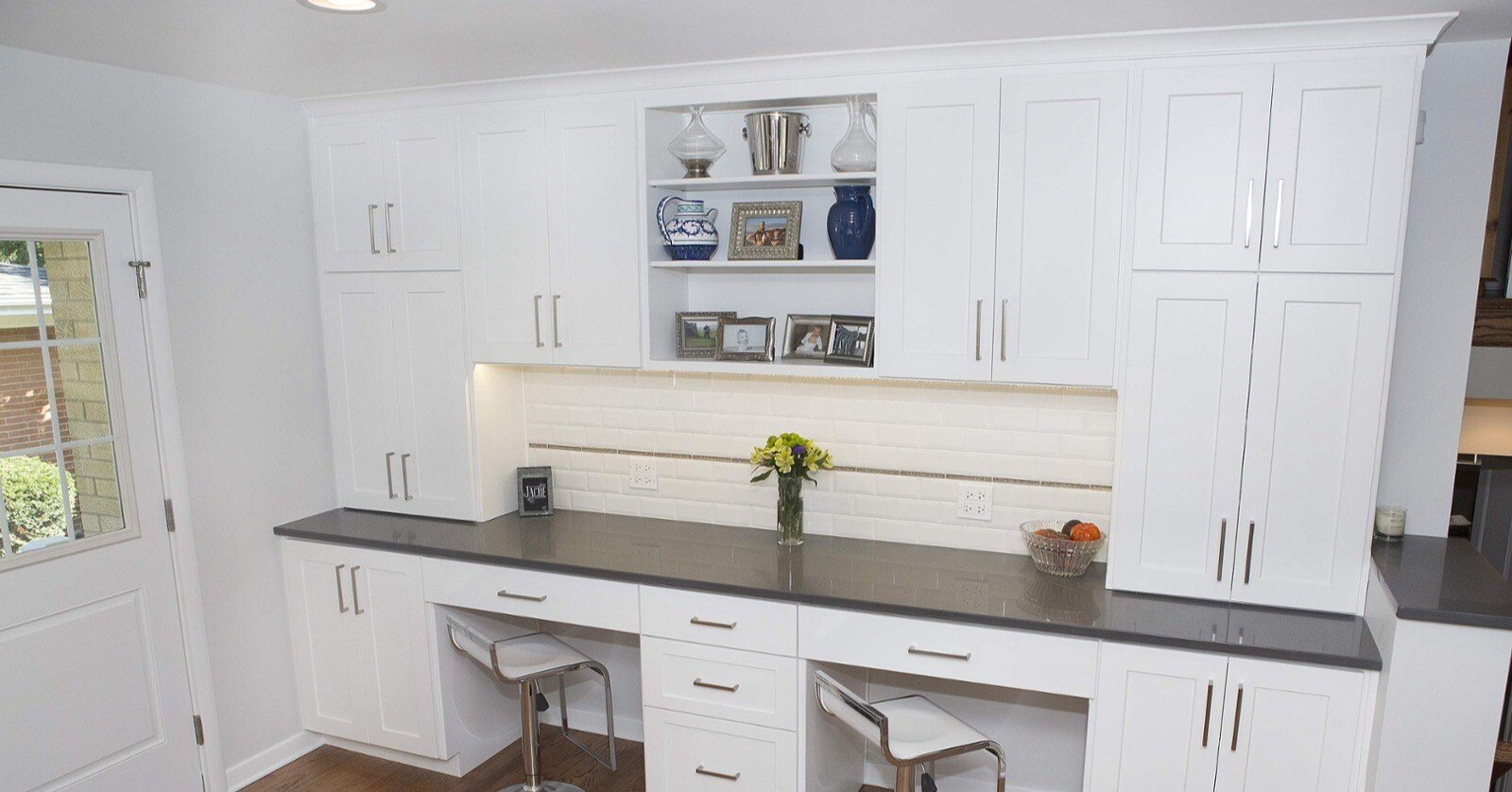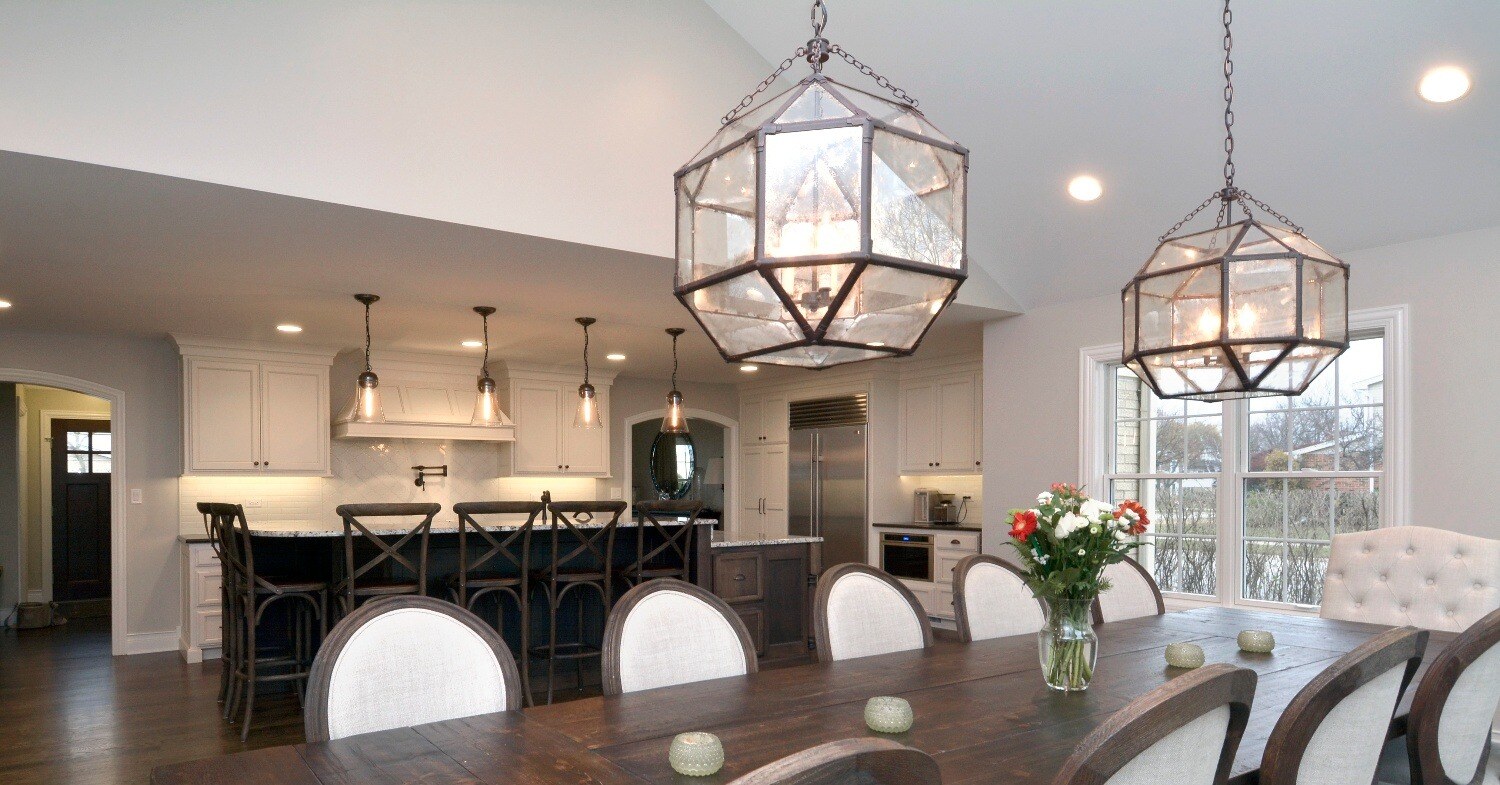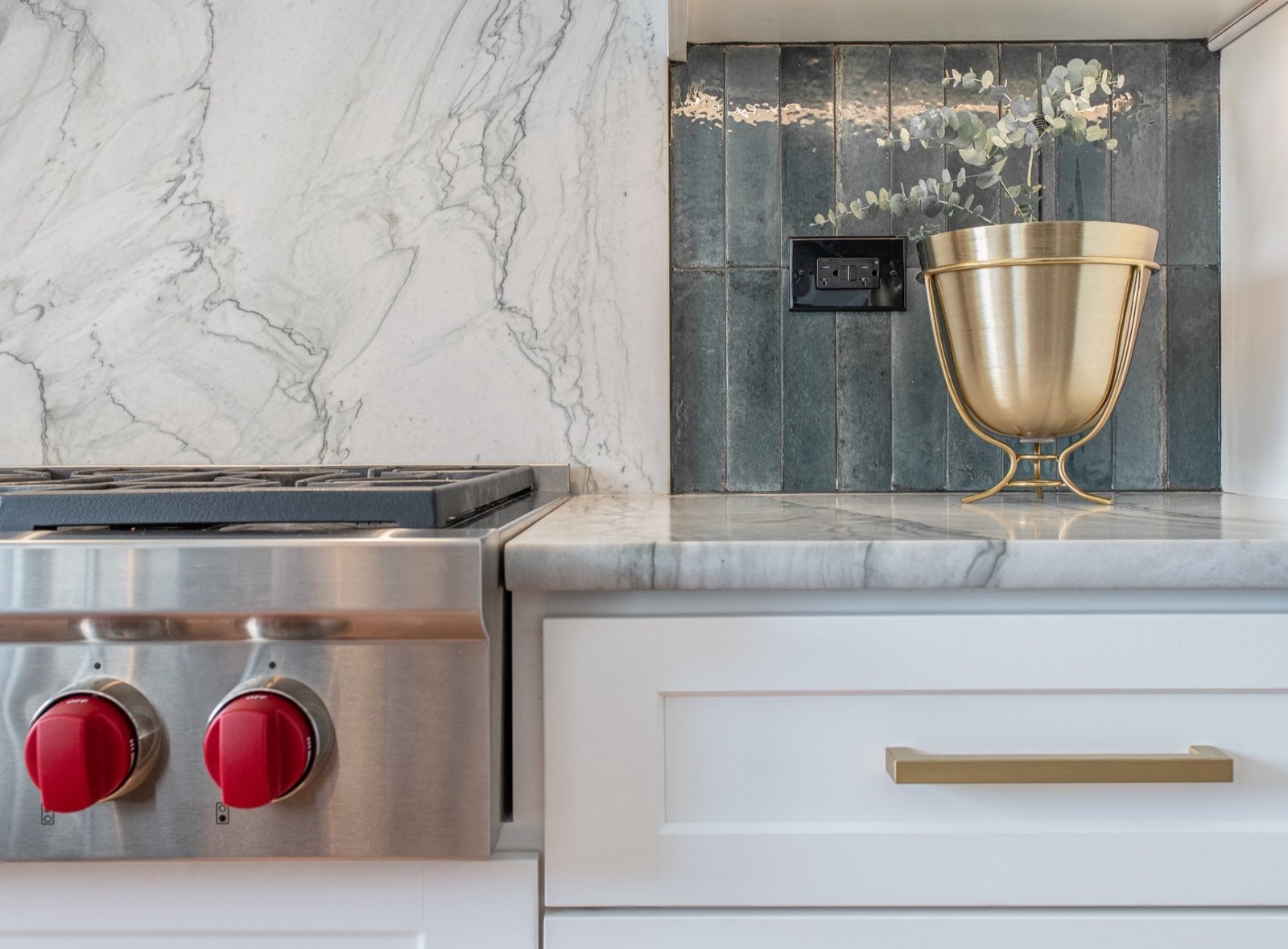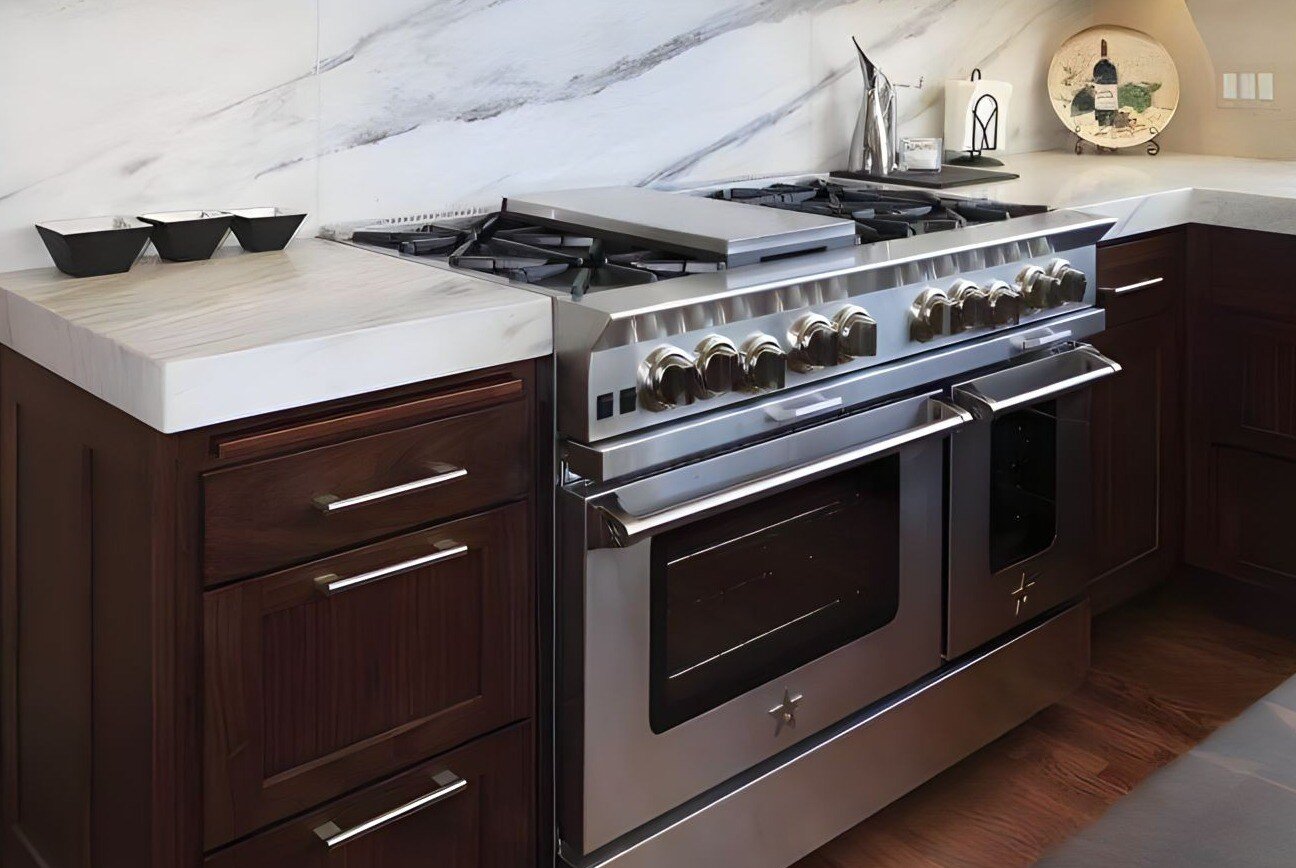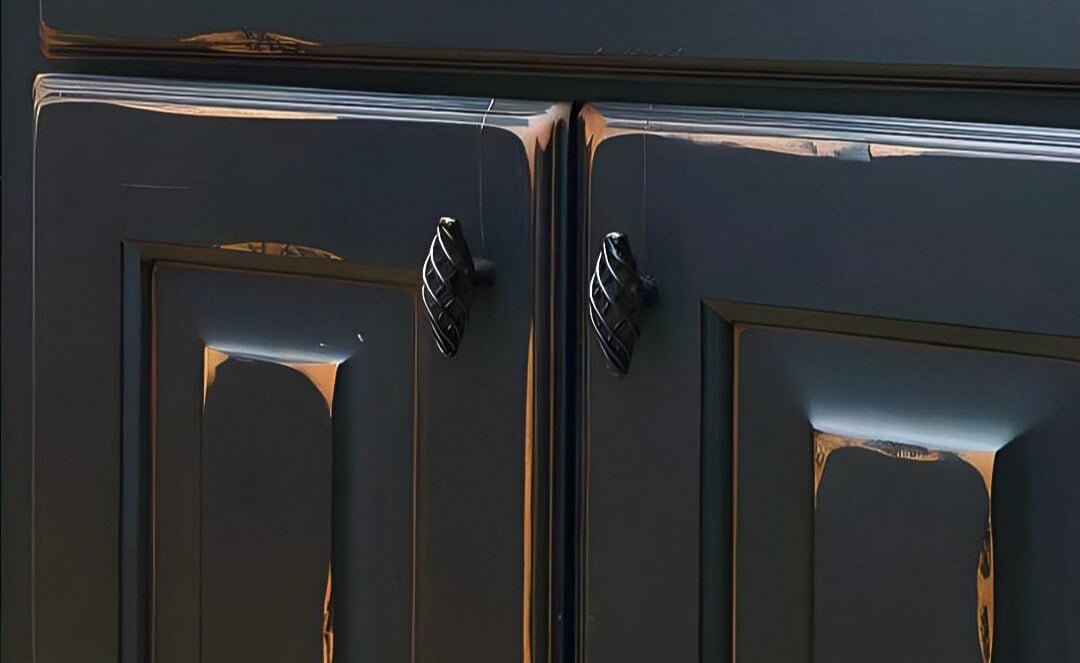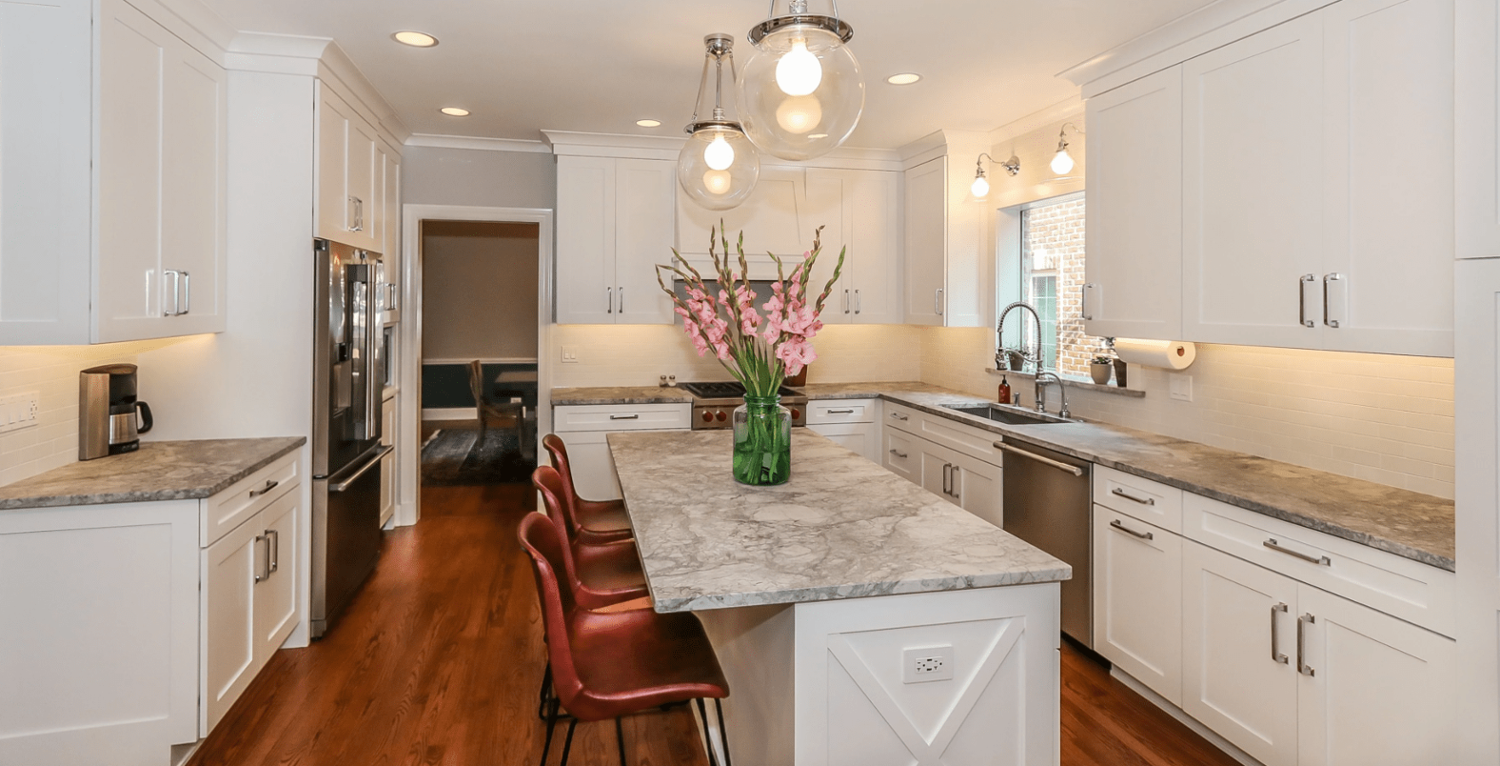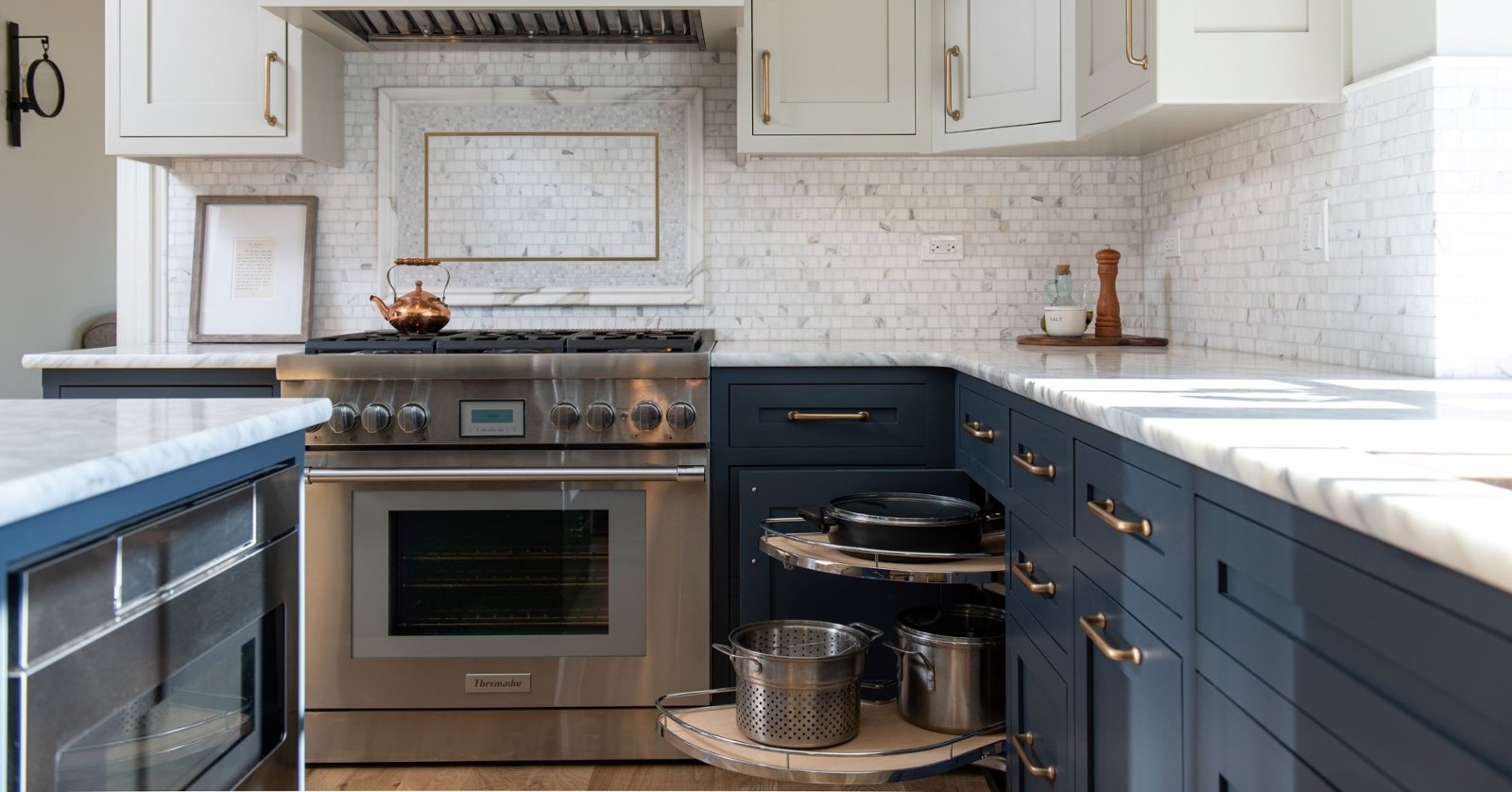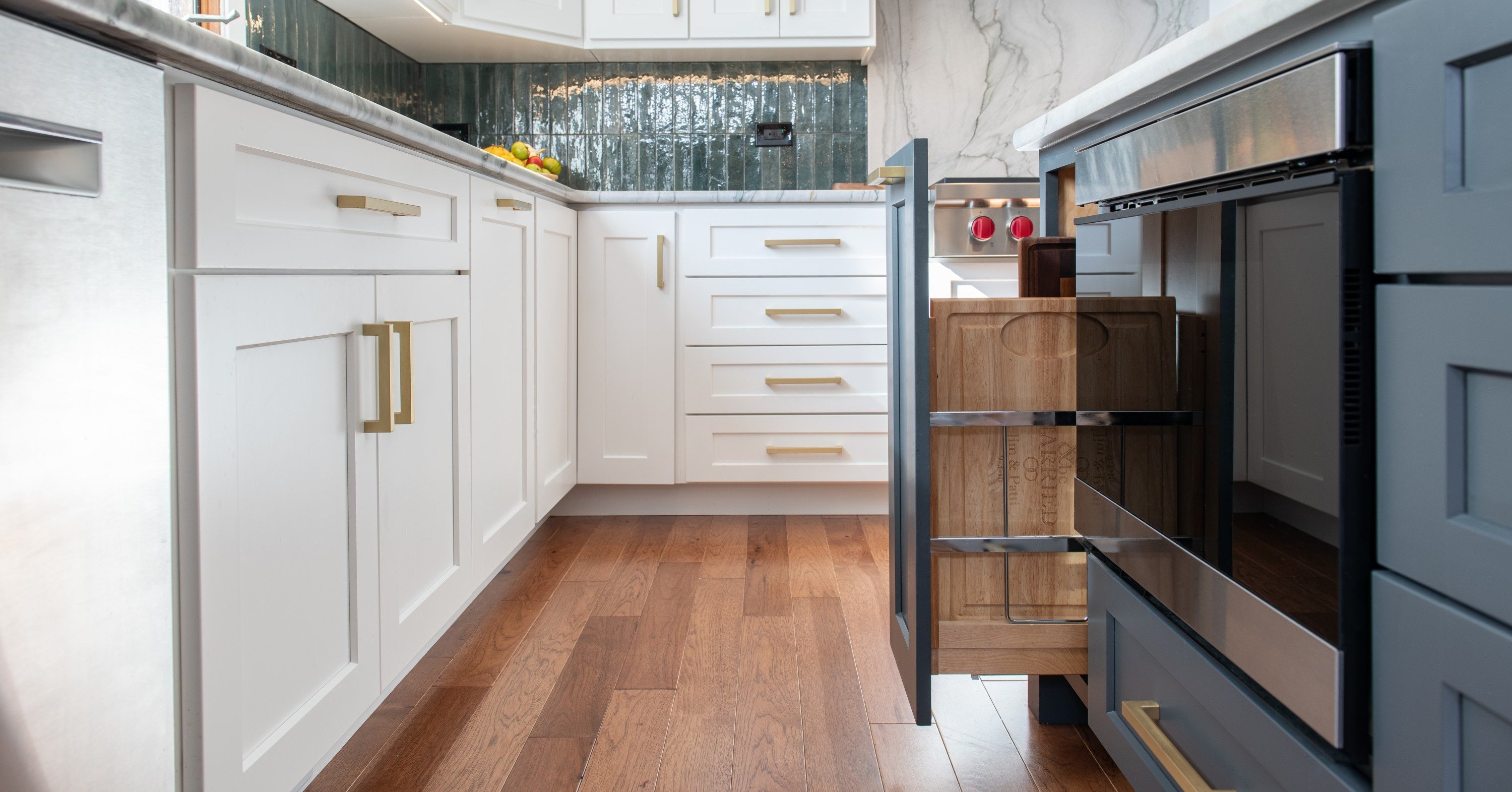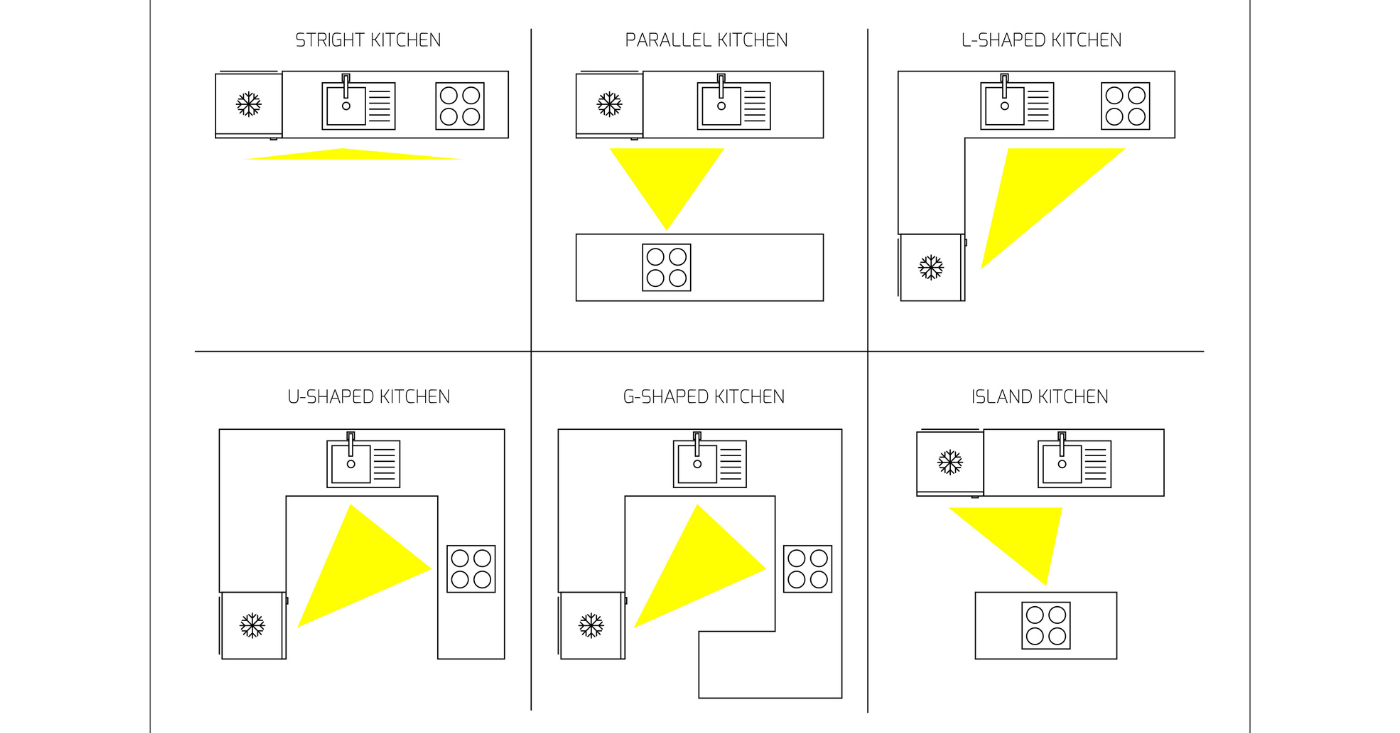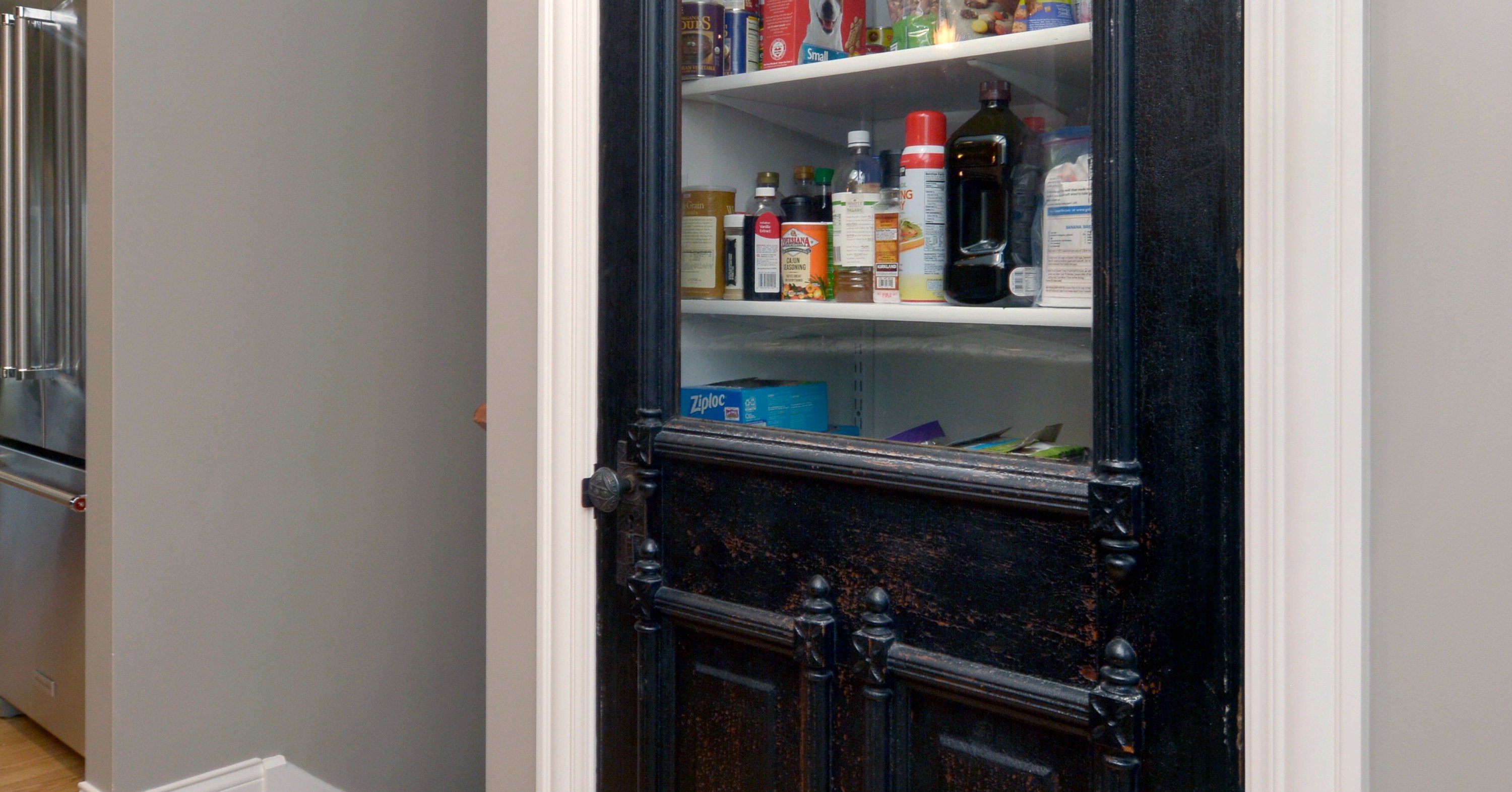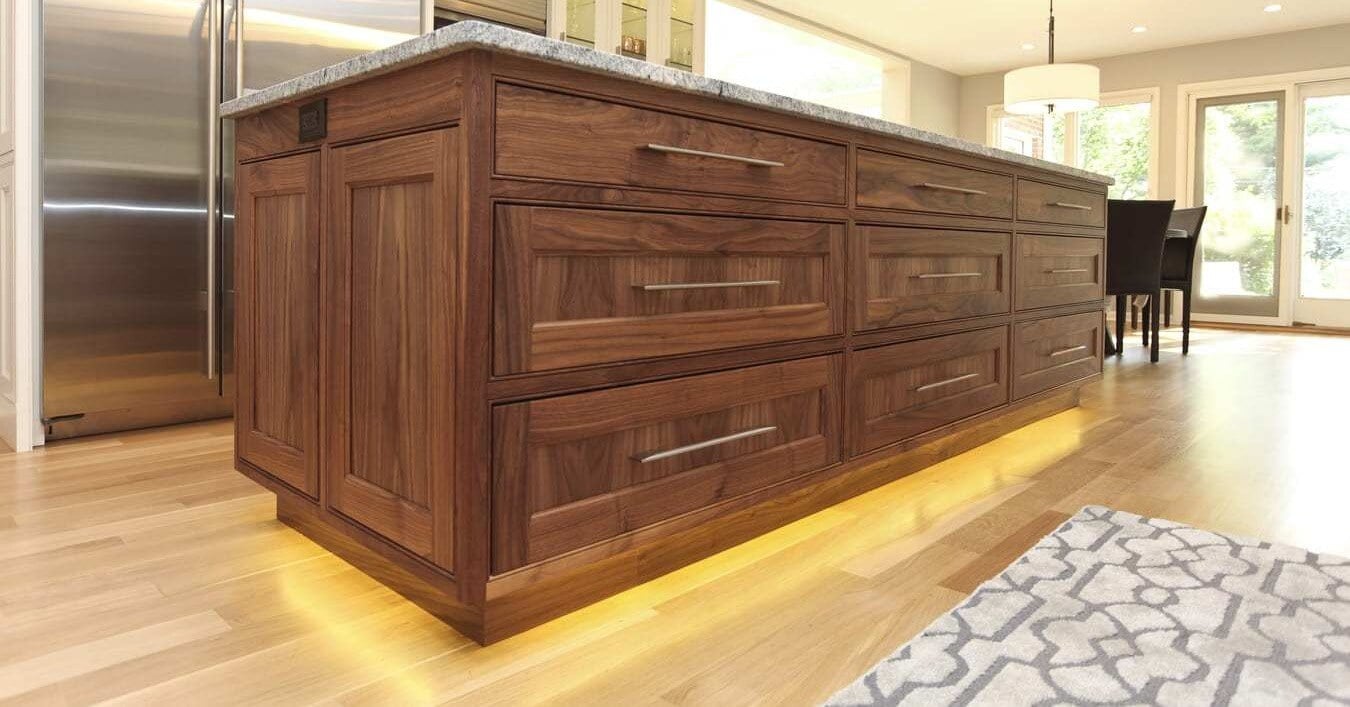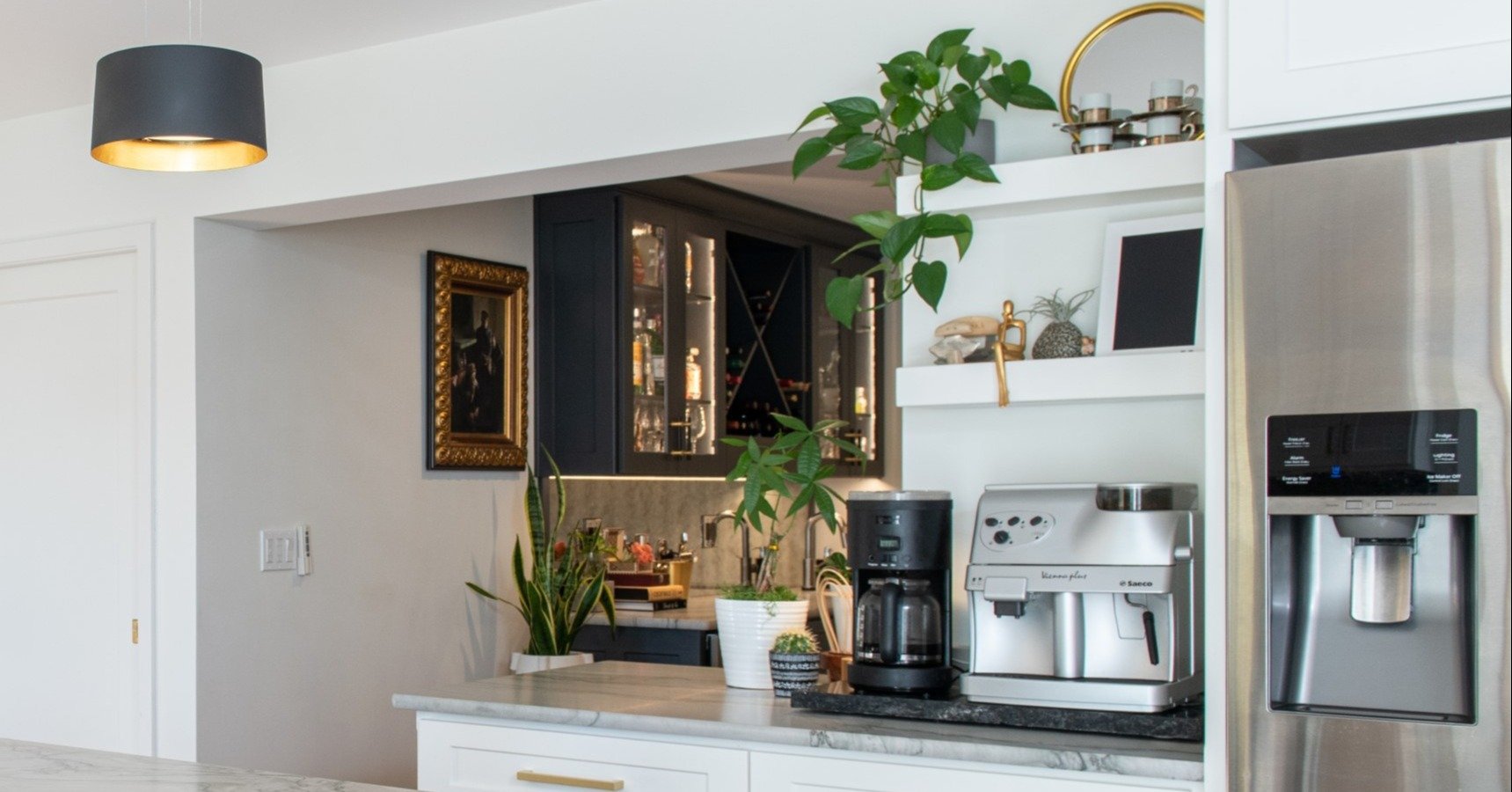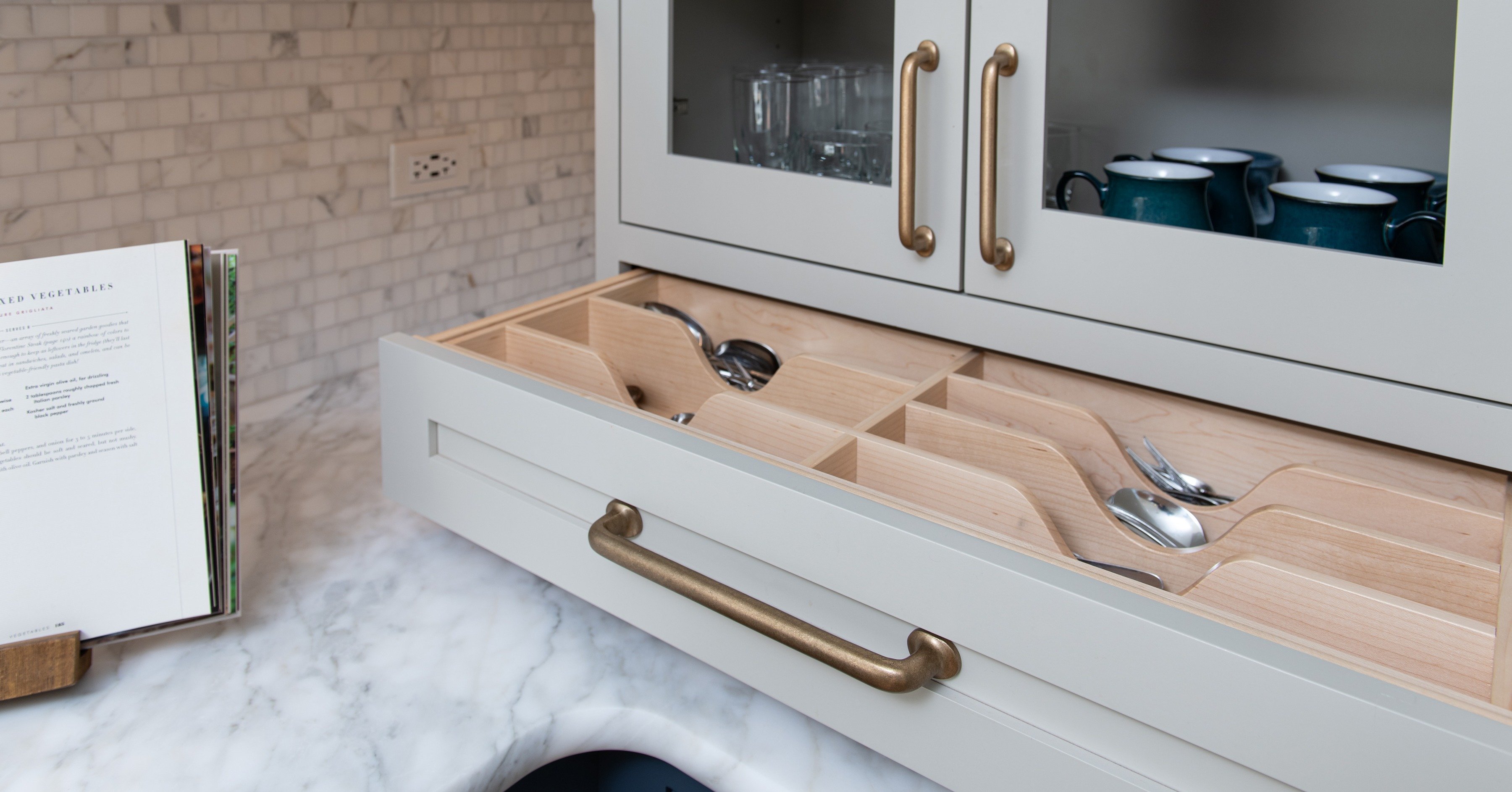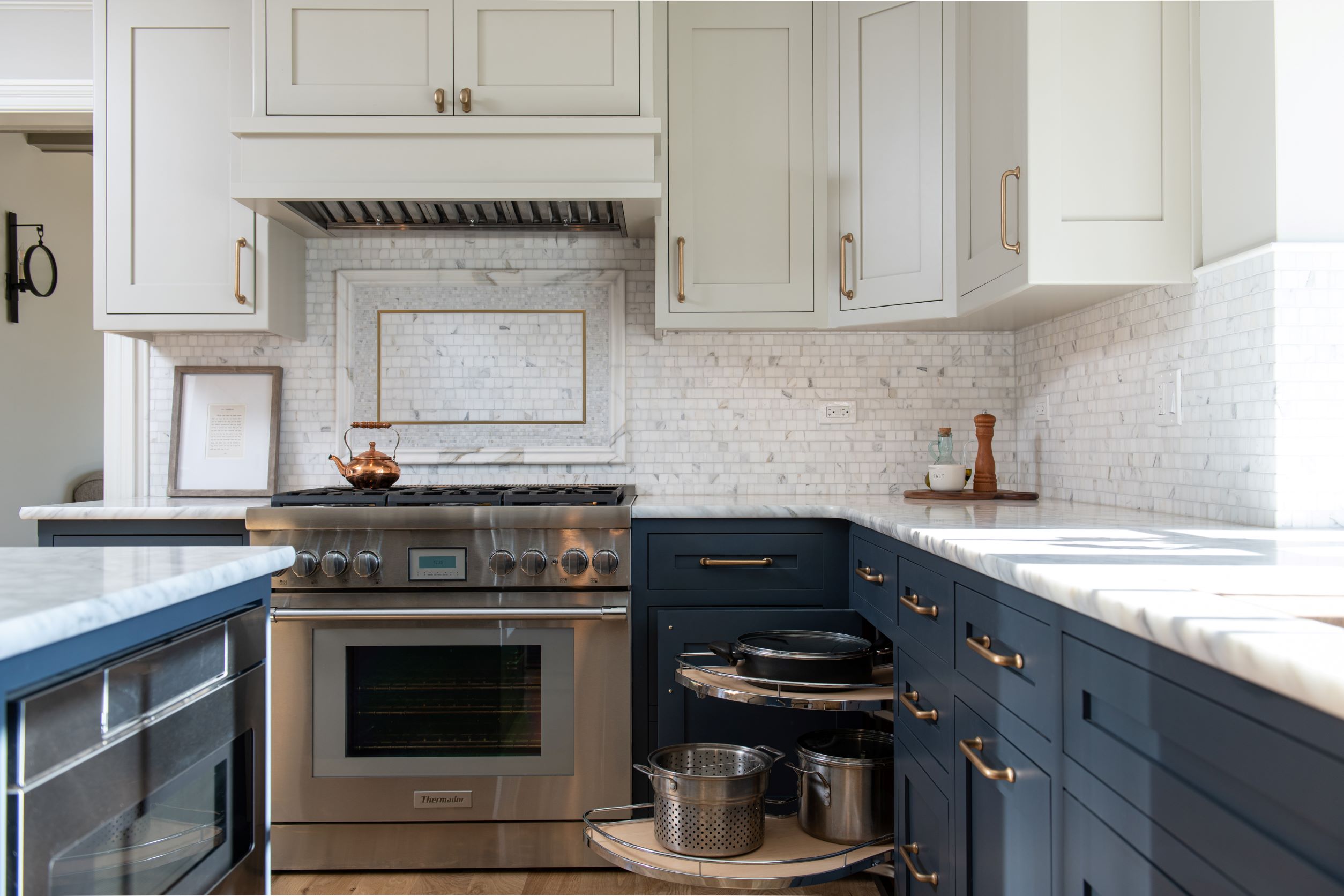8 Alternatives to Granite Countertops That You May Want to Consider
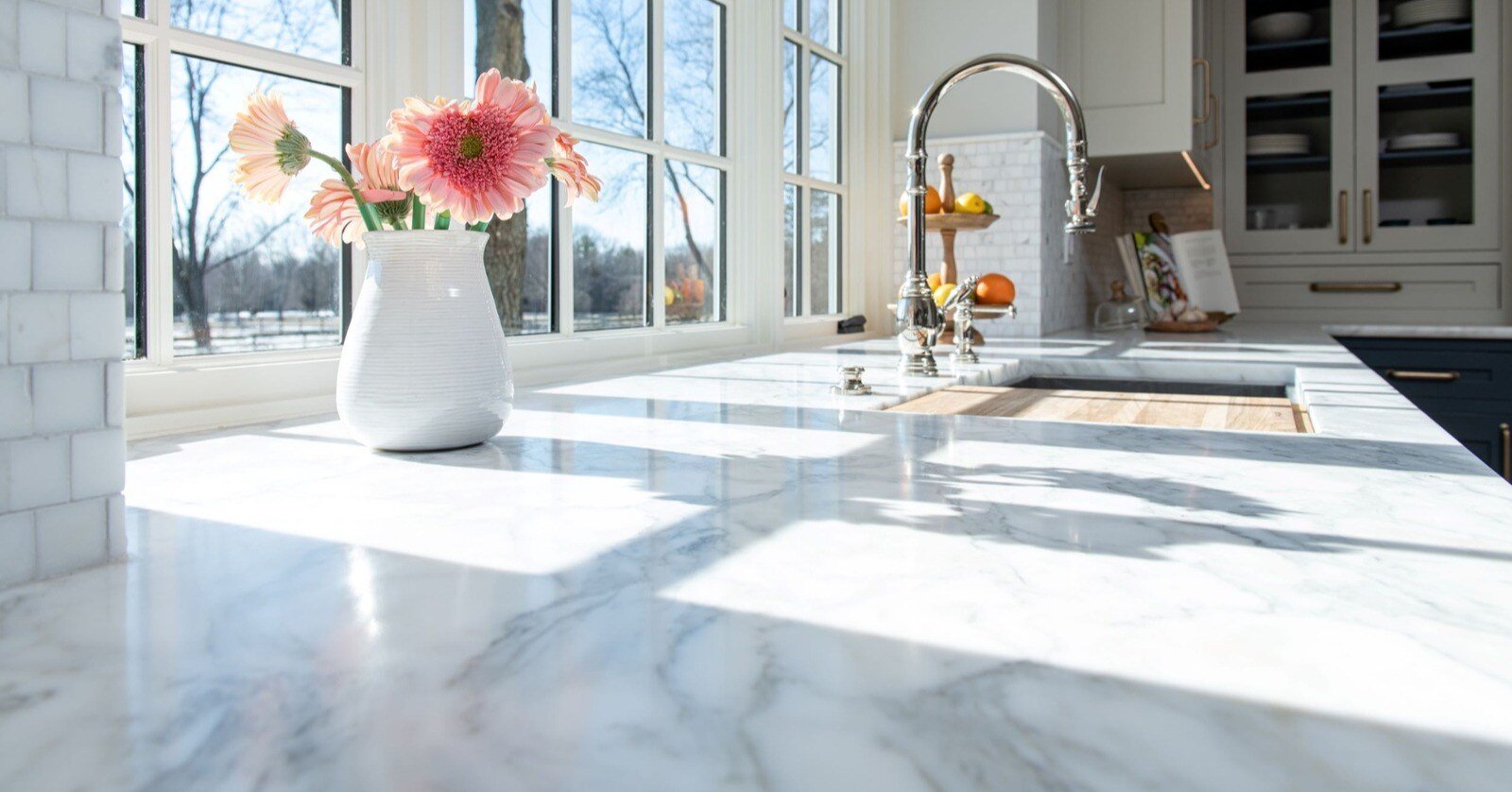
Granite countertops have long been a go-to choice, offering timeless beauty and a vast selection of colors and patterns. But with so many exciting types of countertop options available today, it's important to explore all your possibilities before deciding.
This guide explores eight stunning granite alternatives, helping you find the perfect material to match your style, lifestyle, and habits, whether you envision a modern industrial kitchen style, a warm and inviting farmhouse feel, or anything in between.
1. Marble Countertops: Natural Stone Countertop Material with Timeless Beauty and a Delicate Side
Marble countertops have captivated homeowners for centuries, offering any kitchen a luxurious and sophisticated air. Here's a closer look at what makes marble so alluring:
- Enduring Elegance: Marble's classic veining patterns and smooth surface add a touch of simplistic elegance that never goes out of style. This timeless quality makes marble a sound investment, potentially increasing your home's value.
- A Pastry Chef's Dream: Marble's naturally cool surface makes it a favorite among bakers. Rolling out dough becomes easier, ensuring perfect consistency and preventing overheating.
- Nature's Palette: Marble boasts many colors and styles, far exceeding the typical "white marble" look. From dramatic veined greys and deep purples to rich golds and earthy tans, you can find a marble countertop that perfectly complements your design vision.
However, before you fall under marble's spell, it's important to consider its inherent vulnerabilities.
- A Soft Touch: While marble is a stunning material, it's a softer stone compared to granite or quartz. This means it's more susceptible to scratches and etching, especially from acidic foods and spills. Marble can embrace that aesthetic if you envision a kitchen that develops a worn-in patina over time. However, for those who prefer a pristine look, the need for constant vigilance might be a drawback.
- Porous and Prone to Stains: Marble's porosity makes it vulnerable to staining if not properly sealed. Regular maintenance and promptly cleaning spills on the surface are crucial to maintaining its beauty.
- Higher Maintenance: Beyond regular cleaning and prompt spill cleanup, an additional layer of defense can significantly extend the life and beauty of your marble countertops. Sealants play a vital role in safeguarding this natural stone. The frequency of resealing marble countertops depends on the specific type of stone and the sealant formula used.
- A Price to Match its Beauty: Marble countertops generally have a higher price tag than other stone countertop materials.
2. The Rustic Charm (and Work) of Wood Countertops
Wood countertops, whether gracing your entire workspace or adding a butcher block touch to your kitchen island, bring unmatched warmth and comfort to any kitchen remodel.
Here's what wood countertop enthusiasts love:
- Budget-Friendly: Compared to natural stone options, wood countertops can be a more affordable choice.
- Forgiving Surface: Unlike stone, stains, stretches, and blemishes in wood can often be sanded out, offering a certain level of repairability.
- Ease of Installation: Wood countertops are generally easier to install than heavier stone materials.
- Variety: Embrace the natural beauty of various wood species, from light and airy to rich and dramatic. For added character, you can even opt for a distressed look.
However, wood's natural charm comes with a commitment to care. Here's the not-so-glamorous side:
- Higher Maintenance: Without proper sealing and regular oiling, wood can warp, crack, and become dry.
- Grounds for Bacteria to Flourish: Unsealed wood countertops or ones that haven't been properly sealed can become breeding grounds for bacteria and mold, making them less than ideal for food prep due to potential contamination.
3. The Allure and Limits of Quartz Countertops
Quartz countertops are a popular choice for many homeowners. They offer a beautiful surface that mimics the look of natural stone at a competitive price point.
Here's what makes quartz so appealing:
- Durability: Quartz countertops are incredibly durable, resisting scratches, chips, and cracks better than most other materials.
- Visual Consistency: Unlike natural stone, which has variations in color and pattern, quartz offers a uniform look throughout the countertop, ensuring a flawlessly coordinated aesthetic.
- Design Versatility: Available in a wide array of colors and styles, quartz countertops can seamlessly complement any kitchen design, from modern minimalism to classic elegance.
- Low Maintenance: Unlike some natural stones, quartz requires no sealing, making it easy to clean and maintain. Plus, its non-porous surface resists stains and the growth of bacteria.
However, quartz isn't without its drawbacks:
- Price Point: While generally less expensive than high-end natural stones, quartz can still be a pricier option than wood or granite materials.
- Quality Matters: Be wary of opting for lower-quality quartz, as it may contain higher levels of resins that can potentially emit harmful chemicals.
- Limited Stain Resistance: While highly stain resistant, low-quality quartz can still be susceptible to staining.
4. The Enchanting (and Slightly Fickle) Nature of Quartzite Countertops
Quartzite countertops present a captivating option for homeowners seeking a touch of the extraordinary. This natural stone boasts a wider range of patterns and veining compared to granite, offering a more fluid and dynamic aesthetic. Unlike quartz, which has a uniform look, quartzite countertops showcase the artistry of nature, with each slab having its own uniqueness.
The price tag of quartzite can vary depending on the specific pattern and rarity but generally falls on the higher end of the spectrum compared to quartz. However, for those who value the one-of-a-kind beauty of natural stone, the investment can be well worth it.
A Word of Caution: While undeniably stunning, quartzite does come with a few inherent challenges. One potential drawback is the presence of natural fissures within the stone. These fissures, essentially tiny cracks, can sometimes become vulnerable points during the installation or fabrication process, increasing the risk of the stone cracking.
Another consideration is quartzite's hardness. While more durable than marble, it's not quite as tough as granite. This means it still can be susceptible to scratches and chips if not treated carefully.
Finding the Perfect Balance: If you're drawn to quartzite's captivating beauty and natural variations and are willing to embrace a slightly more delicate material, these countertops can be a beautiful addition to your kitchen.
5. Concrete Countertops: A Canvas for Creativity (with a Little Extra Care)
Concrete countertops offer a unique opportunity to craft a truly customized kitchen centerpiece. Here's what makes them unique:
- Design Freedom: Unlike pre-cut slabs of stone, concrete can be molded into virtually any shape, size, and thickness. This allows for the creation of stunning curves, integrated sinks, or multi-level countertops perfectly tailored to your kitchen's layout and your personal vision.
- A Spectrum of Style: Concrete isn't just a cold, gray monolith. With a vast array of pigments and staining techniques, concrete countertops can be crafted in a wide range of colors and textures, from a smooth, modern minimalism to an earthy, industrial vibe. You can even add a touch of whimsy by incorporating recycled glass, pebbles, or other decorative elements into the design.
- Budget-Friendly Appeal: Depending on the size and complexity of the design, concrete countertops can be more affordable than high-end natural stones like marble or quartzite.
However, there's a flip side to the unique nature of concrete:
- High-Touch Maintenance: Concrete countertops are a porous material, meaning they require regular sealing, typically around once a month, to maintain their stain resistance and overall integrity.
- Professional Installation Matters: While DIY concrete countertop tutorials abound online, achieving a flawless, high-quality installation is best for experienced professionals. The weight, curing process, and potential for cracking all necessitate expertise for optimal results.
- Site-Specific Curing: Concrete countertops are often poured and cured directly on-site due to the weight and potential for cracking during transport. This can extend the installation timeline compared to pre-fab options.
- A Niche Aesthetic: The industrial-chic look of concrete countertops might not be for everyone. It's important to consider how it might impact the resale value of your home in the future, especially if you're drawn to a more unconventional design.
6. Stainless Steel Countertops: A Modern Statement (with a Few Catches)
Stainless steel countertops offer a bold and modern aesthetic, perfect for those seeking an industrial or contemporary kitchen vibe.
Here's what makes this material popular:
- Modern Aesthetic: Stainless steel instantly transforms your kitchen into a modern, polished aesthetic. The clean lines and reflective surface create a sense of openness and can visually expand a smaller kitchen.
- Built to Last: Stainless steel is renowned for its exceptional durability. It's highly resistant to heat, won't chip or crack, and can withstand a busy kitchen's everyday wear and tear.
- Aesthetics with a Twist: While stainless steel boasts incredible strength, it's important to note that it can scratch fairly easily (just take a look at your kitchen sink). These scratches can add a touch of character and a lived-in feel, creating a unique patina over time. However, if you prefer a pristine look, remember that maintaining its peak shine will require significant effort.
- Hygiene Hero: Stainless steel is ideal for hygiene-conscious cooks. Its non-porous surface resists bacteria growth and is incredibly easy to clean and disinfect, making it a top choice for maintaining a sanitary food prep area.
Stainless steel does come with a few potential drawbacks to consider:
- Scratch vs. Patina: As mentioned earlier, the susceptibility to scratches can be a double-edged sword. Some may appreciate the evolving character it adds to the kitchen, while others might find it detracts from the initial polished look.
- Quality Matters: It's important to invest in a thick gauge stainless steel to avoid denting. The lower the gauge, the more durable and expensive it will be.
- Reflective Rebound: Stainless steel's reflective nature can impact the overall lighting in your kitchen. The bright surface can bounce light around, potentially creating an unforeseen effect on the ambiance you're trying to achieve.
- Niche Appeal: Similar to concrete countertops, the industrial aesthetic of stainless steel might not resonate with everyone and could potentially affect your home's resale value.

7. Copper Countertops: Warmth with Special Care
Are you craving a unique touch in your kitchen, but stainless steel feels too sterile? Copper countertops offer a captivating alternative, brimming with both warmth and personality.
Here's what makes copper alluring:
- Warm Aesthetic: While stainless steel delivers a cool, contemporary vibe, copper countertops exude a rich warmth. They can seamlessly blend with rustic or farmhouse-inspired kitchens, adding a touch of elegance and sophistication to traditional settings.
- Nature's Built-in Defense: Copper boasts a unique advantage: its inherent antimicrobial properties. This can be a major selling point for homeowners prioritizing a clean and hygienic food prep space.
Before diving headfirst into the world of copper countertops, it's important to understand their unique characteristics:
- Living Finish, Living Commitment: Copper is a living material that develops a patina over time. This natural oxidation process creates a beautiful, ever-evolving finish, adding depth and character. However, regular maintenance and resealing are crucial to maintain the desired look and prevent excessive tarnishing.
- A Niche Choice: Much like concrete or stainless steel, copper countertops provide a distinct aesthetic. While eye-catching, this bold choice might not appeal to everyone. Consider how it complements your existing décor and whether it aligns with your long-term vision for the space, especially if resale value is a concern.
- Price Consideration: While not always the most expensive option, copper countertops generally cost more than some types of granite.

8. Soapstone: A Timeless Beauty with a Rustic Soul (and a Soft Side)
Soapstone countertops offer a captivating combination of classic elegance and functionality, making them a popular choice for many homeowners.
Here's a closer look at what makes soapstone a compelling countertop alternative:
- Veined Beauty: Soapstone goes beyond the typical "black slab" aesthetic. Its natural veining patterns range from subtle striations to dramatic swirls, adding depth and character to your kitchen. This versatility allows soapstone to seamlessly integrate into a variety of design styles, from the warmth of a farmhouse kitchen to the clean lines of a modern space.
- High-Heat: Unlike some materials that can scorch from hot cookware, soapstone excels as a natural insulator. Rest assured, you can place hot pans directly on its surface without worry.
- A Timeless Investment: Soapstone's inherent elegance transcends trends. Its classic beauty ensures it will remain a stylish choice for years, potentially adding value to your home. Unlike countertops with a more modern flair, soapstone won't go out of fashion, making it a smart long-term investment.
- Non-Porous Durability: Soapstone boasts a naturally non-porous surface, making it highly resistant to staining and cracking. This translates to a low-maintenance countertop in terms of spills and everyday wear.
However, soapstone's charm comes with a few practical considerations:
- Soft Touch, Easy Scratch: While soapstone is incredibly durable in terms of heat resistance and cracking, it is softer than granite or quartz. This means it's more susceptible to scratches and nicks during everyday use. Some homeowners embrace this as part of the stone's natural aging process, while others might prefer a more pristine look.
- The Oiling Ritual: Soapstone requires periodic oiling to maintain its luster and deepen the appearance of its veining. This oiling process is relatively simple but adds a step to your regular countertop maintenance routine.
- A Limited Color Palette: Soapstone's natural color range leans towards shades of black, grey, and sometimes bluish-green. While the veining patterns offer some variation, soapstone doesn't come in a large variety of colors compared to other countertop options.
Moving Beyond Aesthetics: Choosing the Perfect Kitchen Countertop for Your Lifestyle
Selecting a countertop goes far beyond simply picking a pretty material. The ideal countertop will elevate your kitchen's visual appeal and provide durability, ease of maintenance, and functionality that suit your lifestyle and habits. By understanding the unique characteristics of each material, you'll be well-positioned to choose the perfect surface that complements your day-to-day life in the kitchen.
Ready to transform your kitchen? Download our free guide, "Elevate Your Everyday: The Kitchen Remodel Guide for Style & Function," for expert tips on creating a stunning and functional kitchen.
Patrick A. Finn Service Area




